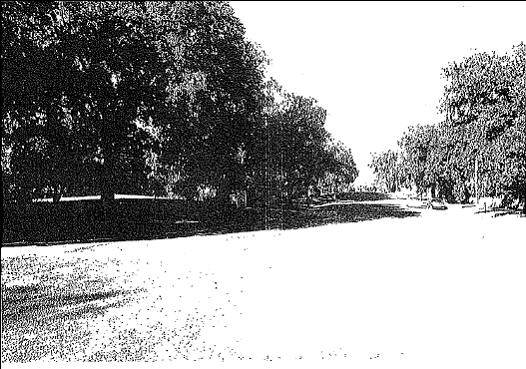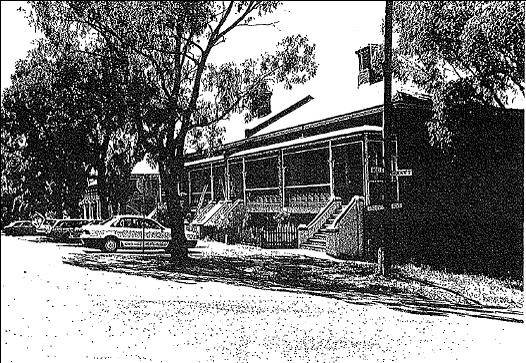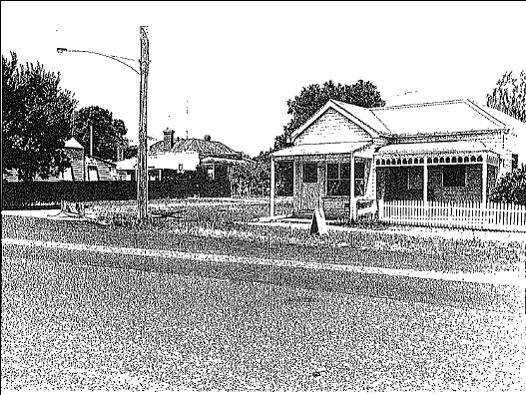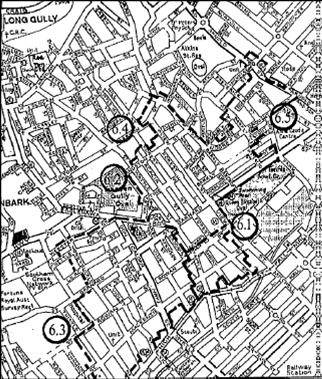| Back to search results » | Back to search page » |
|
BARNARD STREET PRECINCT
LocationBARNARD STREET, BENDIGO, GREATER BENDIGO CITY LevelIncluded in Heritage Overlay |
|
Statement of Significance
What is significant?
Former Bendigo Residential Precinct (part 6.02)
This precinct contains some of the study area's most prestigious houses, dominantly of the 19th and early 20th century era. Persons associated with them include successful mining speculators, such as Mueller and Lansell, and this century's industrial leaders in the Leggo family, both categones reflecting Bendigo's economic base pre and post World War One. The siting of the mining figures, in particular, away from their mine complexes is a departure from early precedents made by Lazarus and Lansell, who lived next to their mines, and marks the creation of Bendigo's early middle-class residential enclaves.
The study area's best designers (including Beebe and Vahland) were instrumental in the construction of many of these houses while the hillside siting of most of the major buildings in the precinct lends the visual diversity of viewpoint and individual building scale. Added to this are the distinctive curved street forms of Barkly Street and Terrace which echo the baroque plan of the commercial centre on the flat below. Close by but disconnected by intervening unrelated development are the two major benevolent institutions in the city, the hospital and the benevolent asylum and, further south is what was once Bendigo's most popular recreation centre, Rosalind Park and the Upper Reserve which was once an ornamental series of lakes and swimming baths but is now a series of sporting grounds. All of these adjacent historic sites lend context to the precinct.
This precinct contains some of the study area's most prestigious houses, dominantly of the 19th and early 20th century era. Persons associated with them include successful mining speculators, such as Mueller and Lansell, and this century's industrial leaders in the Leggo family, both categones reflecting Bendigo's economic base pre and post World War One. The siting of the mining figures, in particular, away from their mine complexes is a departure from early precedents made by Lazarus and Lansell, who lived next to their mines, and marks the creation of Bendigo's early middle-class residential enclaves.
The study area's best designers (including Beebe and Vahland) were instrumental in the construction of many of these houses while the hillside siting of most of the major buildings in the precinct lends the visual diversity of viewpoint and individual building scale. Added to this are the distinctive curved street forms of Barkly Street and Terrace which echo the baroque plan of the commercial centre on the flat below. Close by but disconnected by intervening unrelated development are the two major benevolent institutions in the city, the hospital and the benevolent asylum and, further south is what was once Bendigo's most popular recreation centre, Rosalind Park and the Upper Reserve which was once an ornamental series of lakes and swimming baths but is now a series of sporting grounds. All of these adjacent historic sites lend context to the precinct.
Former Bendigo Residential Precinct (parts 6.04 & 6.05)
Precincts 6.4 & 6.5 adjoin 6.2 on the north and north-east and hence act as a buffer to this important area.
Nevertheless they do contain some locally interesting streetscapes, individually significant buildings and groups of well-preserved housing from Bendigo's golden era. In the case of precinct 6.5, the terrain enhances views to structures and offers elevated sites for unusual complexes such as 14 Anderson Street with its notable garden wall enclosing the hilltop.
Nevertheless they do contain some locally interesting streetscapes, individually significant buildings and groups of well-preserved housing from Bendigo's golden era. In the case of precinct 6.5, the terrain enhances views to structures and offers elevated sites for unusual complexes such as 14 Anderson Street with its notable garden wall enclosing the hilltop.
How is it significant?
Former Bendigo Residential Precinct (part 6.02)
This precinct contains some of the study area's most prestigious houses, dominantly of the 19th and early 20th century era. Persons associated with them include successful mining speculators, such as Mueller and Lansell, and this century's industrial leaders in the Leggo family, both categones reflecting Bendigo's economic base pre and post World War One. The siting of the mining figures, in particular, away from their mine complexes is a departure from early precedents made by Lazarus and Lansell, who lived next to their mines, and marks the creation of Bendigo's early middle-class residential enclaves.
The study area's best designers (including Beebe and Vahland) were instrumental in the construction of many of these houses while the hillside siting of most of the major buildings in the precinct lends the visual diversity of viewpoint and individual building scale. Added to this are the distinctive curved street forms of Barkly Street and Terrace which echo the baroque plan of the commercial centre on the flat below. Close by but disconnected by intervening unrelated development are the two major benevolent institutions in the city, the hospital and the benevolent asylum and, further south is what was once Bendigo's most popular recreation centre, Rosalind Park and the Upper Reserve which was once an ornamental series of lakes and swimming baths but is now a series of sporting grounds. All of these adjacent historic sites lend context to the precinct.
This precinct contains some of the study area's most prestigious houses, dominantly of the 19th and early 20th century era. Persons associated with them include successful mining speculators, such as Mueller and Lansell, and this century's industrial leaders in the Leggo family, both categones reflecting Bendigo's economic base pre and post World War One. The siting of the mining figures, in particular, away from their mine complexes is a departure from early precedents made by Lazarus and Lansell, who lived next to their mines, and marks the creation of Bendigo's early middle-class residential enclaves.
The study area's best designers (including Beebe and Vahland) were instrumental in the construction of many of these houses while the hillside siting of most of the major buildings in the precinct lends the visual diversity of viewpoint and individual building scale. Added to this are the distinctive curved street forms of Barkly Street and Terrace which echo the baroque plan of the commercial centre on the flat below. Close by but disconnected by intervening unrelated development are the two major benevolent institutions in the city, the hospital and the benevolent asylum and, further south is what was once Bendigo's most popular recreation centre, Rosalind Park and the Upper Reserve which was once an ornamental series of lakes and swimming baths but is now a series of sporting grounds. All of these adjacent historic sites lend context to the precinct.
Former Bendigo Residential Precinct (parts 6.04 & 6.05)
Precincts 6.4 & 6.5 adjoin 6.2 on the north and north-east and hence act as a buffer to this important area.
Nevertheless they do contain some locally interesting streetscapes, individually significant buildings and groups of well-preserved housing from Bendigo's golden era. In the case of precinct 6.5, the terrain enhances views to structures and offers elevated sites for unusual complexes such as 14 Anderson Street with its notable garden wall enclosing the hilltop.
Nevertheless they do contain some locally interesting streetscapes, individually significant buildings and groups of well-preserved housing from Bendigo's golden era. In the case of precinct 6.5, the terrain enhances views to structures and offers elevated sites for unusual complexes such as 14 Anderson Street with its notable garden wall enclosing the hilltop.
Why is it significant?
Former Bendigo Residential Precinct (part 6.02)
This precinct contains some of the study area's most prestigious houses, dominantly of the 19th and early 20th century era. Persons associated with them include successful mining speculators, such as Mueller and Lansell, and this century's industrial leaders in the Leggo family, both categones reflecting Bendigo's economic base pre and post World War One. The siting of the mining figures, in particular, away from their mine complexes is a departure from early precedents made by Lazarus and Lansell, who lived next to their mines, and marks the creation of Bendigo's early middle-class residential enclaves.
The study area's best designers (including Beebe and Vahland) were instrumental in the construction of many of these houses while the hillside siting of most of the major buildings in the precinct lends the visual diversity of viewpoint and individual building scale. Added to this are the distinctive curved street forms of Barkly Street and Terrace which echo the baroque plan of the commercial centre on the flat below. Close by but disconnected by intervening unrelated development are the two major benevolent institutions in the city, the hospital and the benevolent asylum and, further south is what was once Bendigo's most popular recreation centre, Rosalind Park and the Upper Reserve which was once an ornamental series of lakes and swimming baths but is now a series of sporting grounds. All of these adjacent historic sites lend context to the precinct.
This precinct contains some of the study area's most prestigious houses, dominantly of the 19th and early 20th century era. Persons associated with them include successful mining speculators, such as Mueller and Lansell, and this century's industrial leaders in the Leggo family, both categones reflecting Bendigo's economic base pre and post World War One. The siting of the mining figures, in particular, away from their mine complexes is a departure from early precedents made by Lazarus and Lansell, who lived next to their mines, and marks the creation of Bendigo's early middle-class residential enclaves.
The study area's best designers (including Beebe and Vahland) were instrumental in the construction of many of these houses while the hillside siting of most of the major buildings in the precinct lends the visual diversity of viewpoint and individual building scale. Added to this are the distinctive curved street forms of Barkly Street and Terrace which echo the baroque plan of the commercial centre on the flat below. Close by but disconnected by intervening unrelated development are the two major benevolent institutions in the city, the hospital and the benevolent asylum and, further south is what was once Bendigo's most popular recreation centre, Rosalind Park and the Upper Reserve which was once an ornamental series of lakes and swimming baths but is now a series of sporting grounds. All of these adjacent historic sites lend context to the precinct.
Former Bendigo Residential Precinct (parts 6.04 & 6.05)
Precincts 6.4 & 6.5 adjoin 6.2 on the north and north-east and hence act as a buffer to this important area.
Nevertheless they do contain some locally interesting streetscapes, individually significant buildings and groups of well-preserved housing from Bendigo's golden era. In the case of precinct 6.5, the terrain enhances views to structures and offers elevated sites for unusual complexes such as 14 Anderson Street with its notable garden wall enclosing the hilltop.
Nevertheless they do contain some locally interesting streetscapes, individually significant buildings and groups of well-preserved housing from Bendigo's golden era. In the case of precinct 6.5, the terrain enhances views to structures and offers elevated sites for unusual complexes such as 14 Anderson Street with its notable garden wall enclosing the hilltop.
Group
Residential buildings (private)
Category
Residential Precinct







